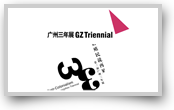Poetry Without Sound?Such an Admiringly Reverential Invocation of Traditiongal Shanhui Painting from Ancient Times
By Uli Sigg
Is there still poetry without sound in contemporary Chinese landscape painting?If not, would it at least be conceivable?And could one of the works in this exhibition, for example, ever become part of the shanshui tradition, or even find its way into the canon of that genre? These arethe questions that motivated this show.
One could imagine a spectrum to organize the works assembled here along the following line: It would start with paintings that are firmly situated within the shanshui tradition and that seek to preserve it by perpetuating it— for simplicity's sake we would be guided by what the artists themselves intended. Next would come works that were created with the intention of transforming, reinventing, overhauling, and breathing new life into the shanshui tradition. Then would follow works determined to remain outside it,so as to be able to comment from a distance. This group would begin with the nostalgic artists,who implicitly or explicitly lament the passing of a great tradition,and would then progress—with mounting negative intensity—to the detractors,for whom shanshui is the substrate of an antiquated way of thinking, and then to those who consider it an insufferable albatross around the artist's neck, opposing all contemporeanity,tactfully at first,then with ever more frequent recourse to irony and to outright dicule. The spectrum would then continue with the utterances of those intent upon burying shanshui for good and with the relics that they themselves have to offer, ending,then,with artists who have cut the cord to shanshui and its elevation of landscape and who treat landscape asan object,just like any other... If we are to make sense of such a spectrum, or indeed of any other ordering system, we clearly cannot defer a definition of what the shanshui tradition actually is any longer. One important source is the interview with Hu Mingyuan published in this catalogue,in which what this "tradition" might indicate is discussed in some detail. Of particular relevance to the issue of attribution to shanshui raised at the beginning of this essay is the question of what essence distilled out of the tradition one may insist upon in a contemporary work. And no sooner has this question been raised than it has to be relativized. After all, shanshui is a multidirectional development that has lasted over a thousand years, meaning that all that can be discussed here—in an outline conceived more as a discretionary piece than as a scholarly undertaking—is"mainstream shanshui," not the whole picture.
But let us return to the aforementioned distillate and the question of what it might consist of. There are clesrly two main lines of inquiry that merit further discussion here: What would such a work have to convey, what might it get away with and what not? And in which medium? To start with, landscape, for obvious reasons, would have to belong in the picture, not for its own sake, but as a vehicle; because shanshui was never merely about holding up a mirror to the landscape in keeping with prevailing aesthetic tastes. It was always about reflecting on and negotiating the artist's own position in relation to the world—for centuries one with a majestic and sublime nature of which humans were but a small and insignificant part. The other criteria were beauty, harmony, and virtuosity of execution. What dissonances there were, were subtle and encrypted.
For today’s viewer, this perception of the universe is ancient history. Silent contemplation of old masters has been replaced by the stress of urban life. Humans are no longer just a part, but made themselves the centerpiece of nature, which they regard as theirs to consume. The once mythically lofty mountain can be scanned in a matter of minutes from the vantage point of the cable car. A lot of contemporary art is about destructing and destructed nature, and much of it is drastic and far removed from traditional shanshui aesthetic. By contrast, other canvases are literally dripping with shanshui—albeit shanshui as veneer.
So how should the updating of the shanshui concept be tackled? Or should we rather resign ourselves to the role of post-mortem examiner? It is tempting to seek the answer to this question in the tradition itself: Whereas in the early phase of shanshui painting, seen landscapes were indeed the resource, as early as in the Ming period (1368—1644) they had been replaced by what, in most cases, were imagined landscapes, even pieced together out of standardized elements. And even great masters of the time believed themselves incapable of truly understanding the landscape any more. They therefore began to paint not observed nature—often actually keeping away from it—but in the style of venerated antecedents, who provided at least a starting point. This gave rise to pictures after pictures, or pictures about pictures—many of them intellectual games on the part of the literati, who used them for projecting their own personality or for pure escapism from the frustrating life of a mandarin. At base, it was conceptual nting, with a very broad definition of landscape, yet for another purpose. Why should this strand of conceptual work with landscape not be perpetuated in contemporary art, albeit with ideas and sentiments which landscape evokes today?
Using which media could one work within the shanshui tradition today? Shanshui hardliners accept only brushdrawn lines in ink and mineral-based colors on rice paper or silk. For them, the medium is conditional for attribution to the shanshui tradition. In the interview published in this volume, Hu Mingyuan describes the expressive compass of tonality, texture, speed, spontaneity, and technical accomplishment which this type of painting demands of the artist’s hand. In a single line, the character, maturity, and skill of an artist should be measurable…Works executed in different media may be good art, but according to the hardliners cannot be art in the shanshui tradition. These are admittedly the fine distinctions that cause the powers of discrimination of a Western audience who has no experience of calligraphy and who has never worked with brush and ink to come unstuck. But would there not be sufficient other aspects of the shanshui tradition, among them its own system of values, its ethos, rhythm, spirituality—especially its spiritual affinity with the masters it repeatedly invokes—which today could indeed be created with a camera, a computer, or by painting in oil on canvas, which is what some of the Chinese modernists of the early twentieth century sought to do?
Why are so many
of today’s artists concerning themselves with the shanshui tradition at all?
This was not yet the case in the eighties and nineties. Although almost all the
artists who have contributed to this exhibition describe their being amply
exposed to shanshui painting as children and later as students, and acknowledge
it as part of their DNA, as it were, and although they all share great respect
for it and some even consider it the most consummate, and hence unattainable
expression of Chinese culture in existence, the fact is that in the first two
decades following China’s opening up to the West, many Chinese artists wanted
nothing whatsoever to do with it. The fascination of Western art with its
newfangled concepts and techniques was simply too strong to resist. The past
decade, however, has seen in the eyes of many the supposedly unlimited creative
potential of Western art run its course in
The artists
currently rediscovering this tradition fit in very well with the image
propagated by official
Why does this all have to be written in cumbersome subjunctive? Because it is speculation. After all, the history of the artifacts of today will be written later. And the artists of today do not work to our desire to classify all things. Their works are two, three, or four things at once. And that is what we like.



